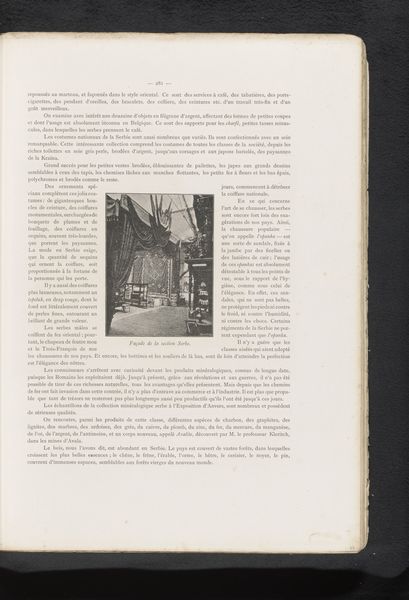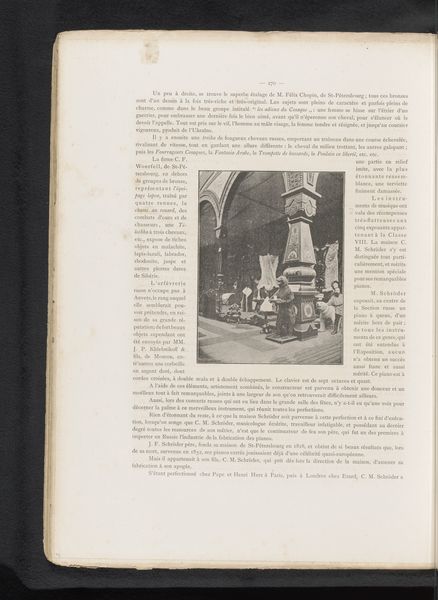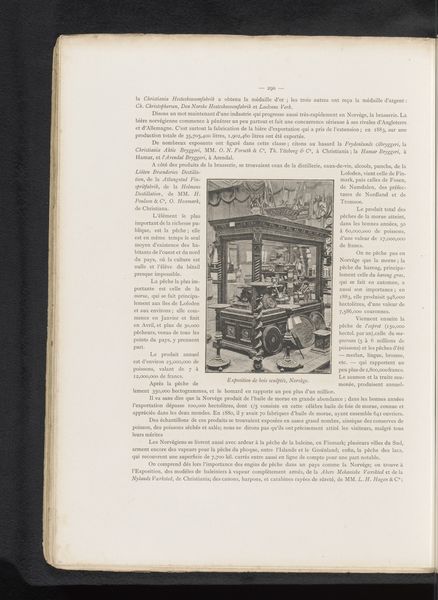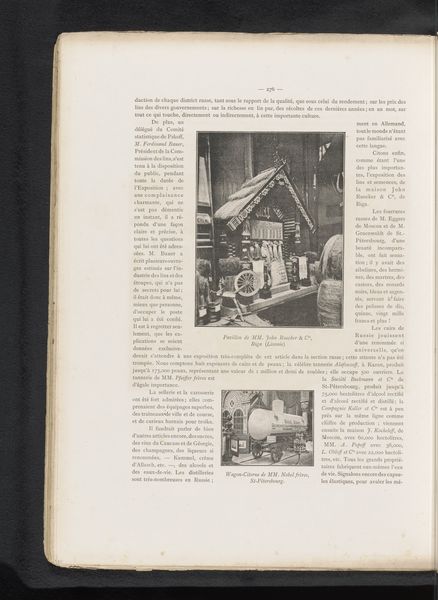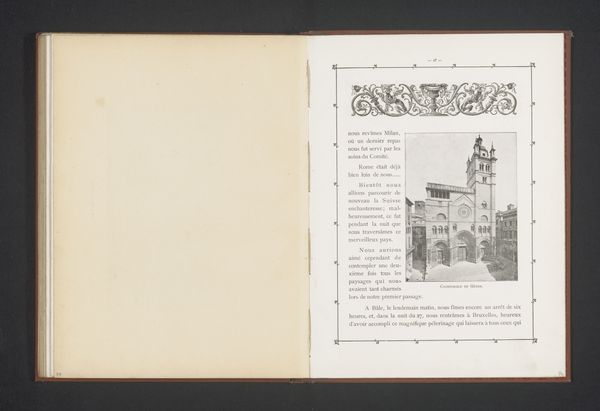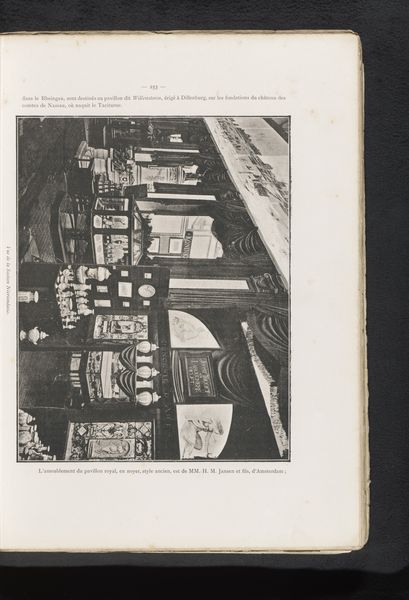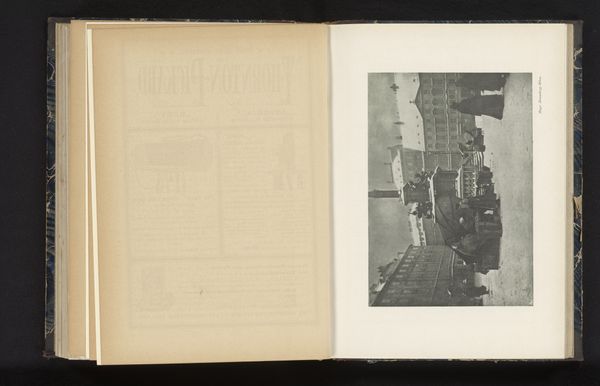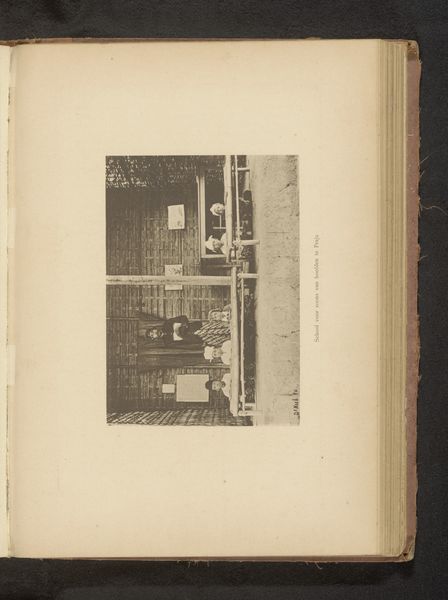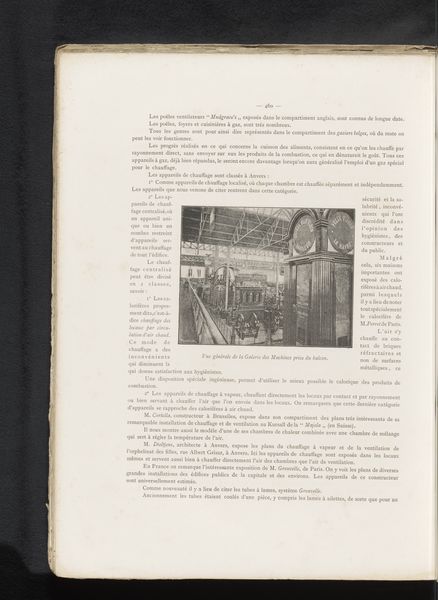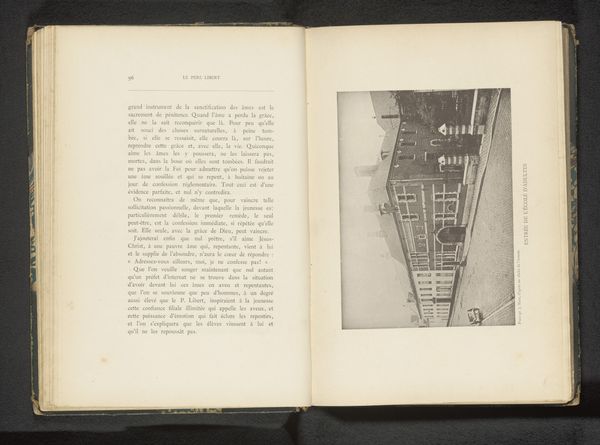
Gezicht op het paviljoen van Girolamo Luxardo op de Wereldtentoonstelling van 1885 in Antwerpen before 1885
0:00
0:00
print, photography, engraving, architecture
# print
#
landscape
#
photography
#
genre-painting
#
academic-art
#
engraving
#
modernism
#
architecture
#
realism
#
monochrome
Dimensions: height 151 mm, width 109 mm
Copyright: Rijks Museum: Open Domain
Curator: This engraving depicts a rather fascinating structure. Editor: Yes, it's entitled "View of the Girolamo Luxardo Pavilion at the 1885 World's Fair in Antwerp," created before 1885. It feels incredibly detailed and precise, capturing this massive structure that I assume showcased Luxardo’s products. What do you make of it? Curator: What I find compelling is how the print highlights the intersection of industry, commerce, and art. Engravings, as a medium, were mass-produced; consider the labor involved in creating this intricate depiction, essentially advertising Luxardo's products within a global market setting, using print to amplify their reach. Look at the textures – attempting to translate glass into monochrome. It is interesting to reflect on the craft of image-making in service of capital. What was the purpose of these World's Fairs? Editor: They were meant to display industrial achievement. But this also shows luxury. Was Luxardo's display considered fine art, then, or craft? Was it about blurring those lines? Curator: Precisely. World's Fairs became stages where industrial output adopted aesthetic qualities, aiming to elevate the status of commodities. This print isn't just an advertisement; it’s evidence of a calculated effort to transform a liqueur into a symbol of cultural sophistication and to encourage production. It makes one think about labor, accessibility, and social messaging. Editor: I didn’t initially consider the engraving itself as part of Luxardo's marketing strategy; more like just a photo. It reframes the whole meaning for me. Curator: Exactly. Examining it this way shifts our perspective on value and creation in the 19th century. It shows more than just the Pavilion; it reflects a system.
Comments
No comments
Be the first to comment and join the conversation on the ultimate creative platform.
